Summary
Over the last decade, the Knik Arm Bridge and Toll Authority (KABATA) spent millions of federal taxpayer dollars on a project that is – literally and figuratively – going nowhere. The Knik Arm Bridge[1] would connect Alaska’s largest city, Anchorage, and a sparsely inhabited piece of land in the Matanuska-Susitna (Mat-Su) Borough at a projected cost of at least $1.6 billion. The Knik Arm Bridge is the sibling of the infamous “Bridge to Nowhere” – the ultimate symbol of government waste and itself a Golden Fleece recipient – in Ketchikan, Alaska. The projects do bear similarities: both received hundreds of millions of federal dollars in earmarks in the 2005 transportation bill and both would be enormous bridges to lightly populated areas. Unlike the Ketchikan bridge, however, the Knik Arm Bridge has never gained anywhere near the same level of notoriety, despite its higher cost and being officially named as “Don Young’s Way”.
The proposal to build the Knik Arm Bridge is still alive and kicking because it has something the Bridge to Nowhere never did: the federally funded cheerleaders at KABATA.
The Knik Arm Bridge is fraught with problems:
- Hope Springs Eternal: The Alaska Legislative Budget and Audit Committee recently reviewed the underlying numbers and concluded KABATA is relying on “overly optimistic” toll and revenue projections to justify the project.
- Decade of Waste: Federal taxpayers have doled out $75 million over ten years on right-of-way acquisition and six-figure KABATA salaries.
- Putting Taxpayers on the Hook: In addition to a direct $113 million investment, federal taxpayers would be asked to back a $357 million loan and subsidize the sale of $600 million worth of bonds, based on costs and benefits that appear increasingly uncertain; Alaskans would be on the hook for (increasingly likely) toll revenue shortfalls.
- Definition of Insanity:KABATA has been rejected from federal loan and grant programs a total of nine times, yet the project’s financing plan still assumes a $357 million federal loan will be forthcoming.
- Up, Up, and Away: More realistic accounting recently caused the estimated cost to jump to $1.6 billion, a $500 million increase. Several factors – in particular the as yet unknown difficulties of building in the area’s soil and clay – will likely drive the price tag much higher, perhaps by as much as a billion dollars or more.
What is KABATA?
In 2003, the Alaska Legislature formed KABATA to secure funding and support for the Knik Arm Bridge. According to the statute, the purpose of KABATA is:
“…to develop, stimulate, and advance the economic welfare of the state and further the development of public transportation systems in the vicinity of the Upper Cook Inlet with construction of a bridge to span Knik Arm and connect the Municipality of Anchorage and the Matanuska-Susitna Borough.”
KABATA consists of a seven-member board – made up of private citizens, regional legislators, and state commissioners – and at present lists seven employees on its website. According to published reports, the executive director and chief financial officer of KABATA each make in excess of $200,000 in salary and benefits. Three employees make six-figure salaries, and two more make more than $75,000.[2]
The Knik Arm Bridge
The Knik Arm Bridge is a proposed toll bridge over Cook Inlet’s Knik Arm in Anchorage, Alaska. At 9,200 feet long, it would be longer than the Golden Gate Bridge. The current cost estimate is $1.6 billion, but several factors – in particular the as yet unknown difficulties of building in the area’s soil and clay in which the bridge would be built – will likely drive the price tag much higher. To help finance the project, travelers would pay $5 for each trip across (heavy trucks would pay more); a commuter using the bridge in both directions would spend $10 each day. Drivers crossing from Anchorage would end up in the Mat-Su Borough (a borough is Alaska’s equivalent of a county), in a mostly undeveloped area. Those coming from the Mat-Su would pass through the Government Hill neighborhood and terminating in downtown Anchorage. The idea for a crossing in this general location dates back as far as the early 20th century, and has since been studied many times in different iterations.
Construction is anticipated in two phases. Phase I would include the bridge structure itself, with a four-lane foundation but only two-lane capacity, 18 miles of two-lane connecting approaches and connector roads, and an 800-foot “cut and cover” tunnel to reduce the project’s impact on Anchorage’s oldest neighborhood, Government Hill. Phase II would be the incremental expansion of the bridge and approaches to the full four-lane capacity.
To reduce the overall public cost, KABATA intends to utilize a public-private partnership (P3) financing structure. The typical advantages of P3 arrangements include the attraction of private capital and the sharing of risk between the public and private entities. In the case of the Knik Arm Bridge, KABATA will use what is known as “availability payment concessions” to reimburse the private partners on the project. As long as the bridge meets performance metrics related to the condition of the facility, the private partner will receive a periodic payment from the State. This payment – including its amount – would not change even if toll revenues fall short of projections.[3] The risk of shortfalls in this case will be borne by Alaska residents.
Taxpayer Investments
Federal taxpayers are being asked to make a significant investment in the Knik Arm Bridge. In 2005, Alaska’s Congressional delegation provided a significant funding boost with $231 million worth of earmarks in the multi-year surface transportation bill (and, in a funny twist, the late Sen. Ted Stevens (R-AK) inserted a provision naming the future bridge “Don Young’s Way,” an homage to Alaska’s lone representative in Congress and the bill’s primary author, Don Young (R-AK)). Public outrage about the earmarks for the Knik Arm Bridge and the other Bridge to Nowhere (which received $223 million in earmarks in the same bill) was severe, however, forcing Congress to reverse course and remove the requirement that the earmarked money be spent specifically on the bridges. Alaska was allowed to keep the money for its own use, however, and the Alaska legislature still committed nearly $100 million of federal funds to the Knik Arm Bridge. To date, approximately $75 million of that money has been spent on right-of-way acquisition and KABATA staff salaries. In total, it is expected direct federal investment in the project would be $113 million.
In addition to the direct outlay, federal taxpayers would also be asked to subsidize the project in other ways. KABATA has sought a federally-backed TIFIA[4] loan, a program that provides low-cost loans to projects with a private investment component. Though KABATA originally sought $500 million, project documents now indicate it anticipates a $357 million loan. Backstops built into the TIFIA program are intended to protect taxpayers in the case of bankruptcy or lagging toll revenue (tolls would be used to pay back the original loan), but if things go seriously wrong and the private backers are unable to repay the loan, taxpayers could lose part or all of this investment.
Federal taxpayers would also subsidize the sale of bonds to raise money for the project. The Knik Arm Bridge is approved for up to $600 million in “private activity bonds” (PAB), which allow private companies to issue tax-exempt bonds for the construction of public facilities. This is a federal taxpayer subsidy for the project because of the federal tax-exempt nature of the issued bonds.
Alaskan’s would also be asked to shoulder a significant and unknown cost if the bridge is built. To secure a federal TIFIA loan, Alaska needs to create a reserve fund (currently anticipated by the State to be $150 million) to cover toll shortfalls in the first few years after the project is finished, and would be required to ensure the State will cover all shortages in toll collections over the life of the project. By the time it became clear toll collections would fall short of expectations, the State would be in an expensive predicament: buck up the annual shortfall or let the project go bankrupt and harm Alaska’s credit rating (thereby making future borrowing more expensive).
Legislative Audit
If taxpayers are expected to make such a robust public investment, it is only fair to demand a high level of transparency about the project’s costs and benefits. This would provide some assurance the bridge will perform as expected (ie. will raise enough toll revenue to cover the project’s costs) and won’t become an even greater future burden. Unfortunately, these assurances have not materialized. A recent audit by the Alaska State Legislature Auditor raises serious doubts about the quality of the anticipated investment.
What follows are some of the most significant issues raised by the legislative audit.
Project Uncertainty
The audit’s primary conclusion is that toll and revenue projections prepared for the Knik Arm Bridge are “unreasonably optimistic” and the level of cash flow to the State is “likely overstated as a result.” This audit is based on a report prepared by a private consultant[5] and approved by the joint Legislative Budget and Audit Committee of the Alaska Legislature. This December 2012 analysis does not state the case in such stark terms, but does call the traffic and toll revenue projects “optimistic.” The conclusions reached in both reports are based on several general considerations: anticipated economic growth and development, growth in anticipated traffic, commercial/passenger vehicle splits, and appropriateness of the projected tolls ($5 each way for passenger vehicles and $18 each way for commercial vehicles).
For many years, bridge opponents have called into question the employment and population numbers used to justify the project, and highlighted how unlikely it would be for adequate numbers of people to pay $5 each way ($18 for commercial vehicles)[6] to get to Anchorage from Wasilla, Palmer, and the other communities in the Mat-Su Valley. In addition to the prohibitive cost, the trip would often be longer across the Knik Arm Bridge then using the existing Glenn Highway, raising question as to why large numbers of drivers would pay for the privilege of a longer journey to Anchorage.
The auditor found no support for several of KABATA’s numbers, including expected market share of Mat-Su drivers using the bridge (50%) and expected traffic growth along the Glenn Highway corridor (5%, despite recent evidence estimating annual growth below 2%). For example, one likely factor to increase traffic on the Mat-Su side is Port MacKenzie, which would clearly be more easily accessible from downtown Anchorage with the bridge, yet the auditor found may have less than one-third as many jobs in 2035 as KABATA assumes in its calculations.
The accuracy of the toll and revenue projections are paramount in a project as large as the Knik Arm Bridge. If adequate tolls fail to materialize, the public sponsors of the project would be on the hook for a significant amount of cash. Of particular concern is the track record of the toll and revenue consultant hired by KABATA to provide this crucial piece of the investment puzzle: CDM Smith (formerly Wilbur Smith Associates). To date, at least four major toll projects for which CDM Smith provided toll and revenue forecasts have gone bankrupt or required significant project restructurings (and resulting investor losses): San Joaquin Hills Toll Road (CA), Pocahontas Parkway (VA), South Bay Expressway (CA), and Southern Connector (SC).
A general review of toll and revenue projections made for previous infrastructure projects is enlightening. In 2007, the National Cooperative Highway Research Project (NCHRP) produced a synthesis paper looking at the issue of demand and revenue estimating. It considered 26 tolled facilities, including roads, bridges, and tunnels. An analysis of the data in the paper, conducted separately, shows anticipated tolls and revenue were overestimated by 109% in the first five years of operation. To put it another way, estimates of revenue were more than double what occurred in reality.
These conclusions are particularly concerning for Alaska’s residents, since the State will be on the hook for any toll shortages. But federal taxpayers are also left exposed by this revelation. If, as the audit suggests, there will be less bridge traffic than currently projected, it throws into question the entire financial justification and undermines any calculation of benefits. This is vital because the calculated benefits are relied upon to justify the entire enterprise. The ratio of costs and benefits is also a central consideration as to whether the project is worthy of a TIFIA loan. Overestimating the amount of traffic the bridge will carry and the amount of tolls that will be collected makes the bridge look better on paper. More realistic numbers may indicate the bridge is not a worthy federal investment.
Securing the TIFIA loan itself is also an enormous uncertainty for this project. Already KABATA has applied for and been rejected for a TIFIA loan five times. KABATA has also failed to qualify four times for funding under the TIGER grant program, a discretionary funding account managed and distributed by Federal Highway Administration (FHWA). In regards to KABATA’s most recent TIFIA application, FHWA said in a letter that to even be considered for a loan this time around, the State would have to create and provided appropriations for a reserve fund to cover potential toll shortfalls. Legislation to create such a fund has failed in two consecutive legislative sessions. The recent audit appears to undermine KABATA’s ability to convince legislators to create this fund. Without the fund there is no TIFIA loan; with no TIFIA loan, the chances of a bridge are further reduced, since the cost of borrowing the additional money without federal subsidy would likely be prohibitive.
The legislative audit not only killed chances this year for a reserve fund, but also resulted in a serious legislative push to wrest control for the project away from KABATA entirely. House Bill 23 would have increased the borrowing limit from $500 million to $600 million and created the necessary capital reserve fund[7] while at the same time handing the reins for the project over to the Alaska Housing Financing Corporation (AHFC). KABATA would have been renamed as the Knik Crossing Development Corporation and made a subsidiary of AHFC. The current KABATA board would have remained for one year to serve as (paid) advisors during the transition.
Though this proposal did not pass the Senate, the fact it passed the House is a significant blow for KABATA and a clear indication that confidence in its ability to deliver this project is waning.
Escalating Costs
The Legislative Audit also revealed another important element of the bridge: the estimated cost has risen to at least $1.6 billion. Prior to the audit’s release (and as is still represented on KABATA’s website), the estimated cost was $1.1 billion. This nearly 50-percent jump is an enormous increase in estimated cost. This new cost figure, which comes from a December 2012 financial plan prepared by KABATA management with assistance from a financial advisory firm, was not previously revealed. Much of this increase can be explained by KABATA previously assuming toll revenues for a four-lane bridge starting in about 2030, but not including the cost of build-out to make it four lanes.
This increase may be the tip of the financial iceberg. A reasonable and well-documented analysis prepared by bridge opponents shows the final cost of the bridge could be higher by $1 billion or more than the current cost estimate. The Federal Highway Administration will prepare an update to its own cost estimate sometime this summer. For its part, the auditor refused to speculate on the project’s total cost because such an estimate would be impossible with reliable traffic and toll numbers.
Flawed Reasoning
Extensive calculations are made for infrastructure projects – especially projects as large as the Knik Arm Bridge – to determine costs and benefits. The benefit-cost ratio is a crucial element of how spending decisions are made and how funding is prioritized. In both regards, the Knik Arm Bridge is looking like a loser. The announced costs have risen dramatically, and could go much higher if independent estimates are to be accepted. At the same time, the benefits of the bridge (the amount of traffic it will carry, the amount of economic activity it will generate, etc.) appear to be overstated on the whole, according to the extremely troubling legislative audit. As a result, the benefit-cost calculation is doing a back slide that makes the bridge ever harder to justify.
The inclusion of private dollars in the financing package is generally a positive indication of a project’s financial soundness. But in this case, the private partner that is eventually chosen to design, build, and maintain the bridge will have a contract guaranteeing payments from Alaska that are enough to pay off the debts and return a profit. This fact weakens the signal generally provided by private financing.
Conclusions
In the wake of the audit, an Anchorage Daily News editorial criticized KABATA and called its work “booster spin.” Troubling signs indicate KABATA is pushing for the bridge despite serious questions about the numbers being used to back the project. TCS has long objected to this project on its merits, and our position appears more justified than ever. Federal taxpayers have already invested, and will continue to invest, a great deal if this project moves forward. Limited dollars and ever-growing needs mean only the most important projects be constructed. The Knik Arm Bridge fails to achieve this standard, the cheerleading of KABATA notwithstanding.
KABATA has failed Alaska’s citizens and wasted millions of federal taxpayer dollars, with little to show for it. Millions have already been spent to purchase homes and businesses in the project’s right of way, despite the lack of adequate financing. To say nothing of the millions KABATA has spent on studies and salaries over the past decade. It is time to end the nonsense, before we end up with a multi-billion dollar project that lives up to the “bridge to nowhere” billing.
Congress and the administration can both help ensure taxpayers aren’t saddled with an expensive albatross. Congress won’t be asked to directly provide any additional funding, but it did approve the original earmarks that have sustained KABATA for over for a decade. Recognizing the waste has gone on long enough, lawmakers should rescind the remaining earmarked funds Alaska committed to the project. This would be a strong statement that Congress will not allow federal dollars to be spent on wasteful and unjustified projects, even if the taxpayer savings would be nominal.
The administration has its own set of pressure points. The Federal Highway Administration controls the TIFIA loan program and should refuse to give KABATA a nickel unless a thorough, trustworthy, and transparent review of the underlying numbers shows a high rate of return for the expected investment. The executive branch also issues project permits, including one from the Army Corps of Engineers since the bridge crosses a navigable waterway. The issuance of any permit for the Knik Arm Bridge should be denied until there is assurance the project is on sound financial footing, is justified on its merits, and will not be a future taxpayer burden.
Footnotes
[1] The bridge in question is usually referred to as the Knik Arm Bridge or Knik Arm Crossing. One fact not lost to history, however, is that the bridge’s official name is actually “Don Young’s Way”, homage to the long-serving Alaska Congressman and author of the 2005 transportation authorization bill. That bill, called SAFETEA-LU, contains Sec. 4411 which officially designates the bridge as Don Young’s Way.
[2] Cited with permission of Alaska Budget Report.
[3] This is in contrast to a “toll concession” agreement, whereby the private entity receives the tolls from the facility to repay debt, maintain the facility, and earn a profit. This can be a disadvantage for the State if tolls end up much higher than anticipated, because the extra cash goes to the private company and not public coffers. In return, the private company – not taxpayers – would bear the risk if tolls revenues are lower than projected. The higher the level of uncertainty regarding expected toll collections the higher the return on investment the private company would demand.
[4] Transportation Infrastructure Financing and Innovation Act.
[5] Timothy James and Associates based in Phoenix, Arizona.
[6] This is the opening year toll rates. KABATA’s financial plan assumes 2.5% annual increase in toll rates, so the $5 car toll would be $10 by 2046 when the bonds for the project are paid off; truck tolls would be more than $37 each way by that time.
[7] This provision would have created the fund itself, but not provide the actual funding. Interestingly, both chambers did approve the first $10 million payment into the capital reserve but did so contingent on the establishment of the fund itself, which did not happen.

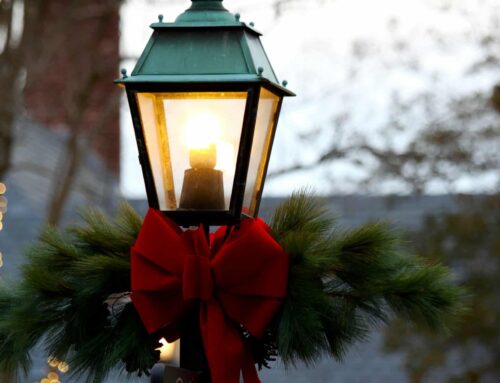
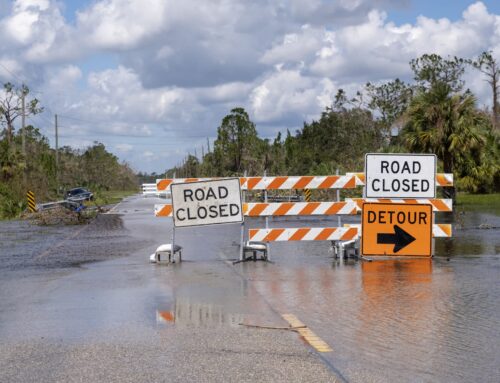
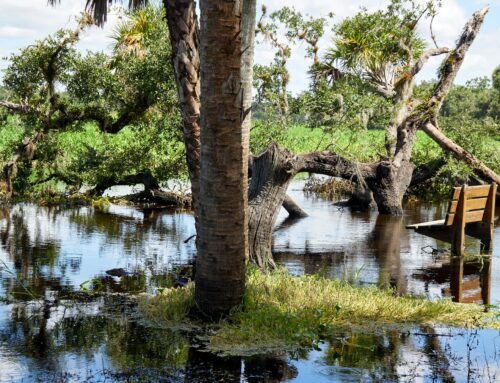
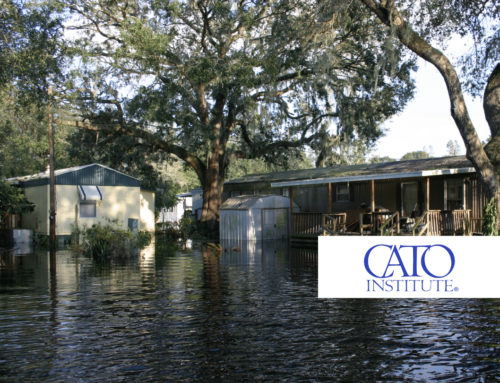
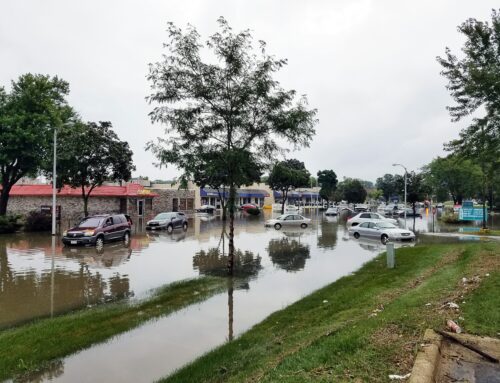
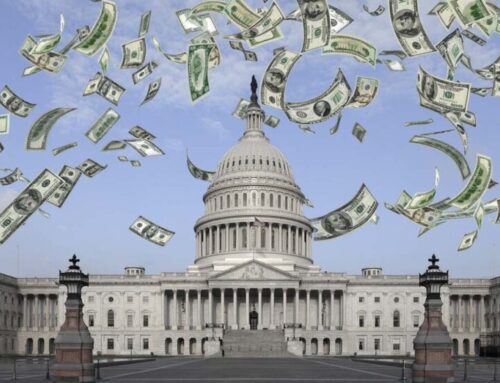




Get Social